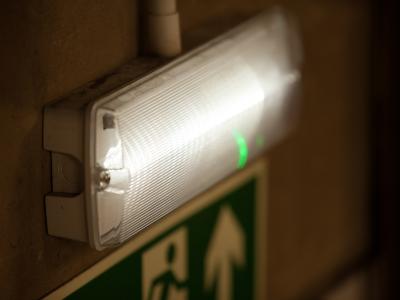
Emergency Lighting Advice for Landlords
Emergency lighting in communal areas
When a fire occurs, people escape in haste and distress. They might be disoriented, especially at night. Staircases and escape routes must therefore be adequately lit, even if the mains power supply is failing as a result of the fire.
Emergency lighting, which will illuminate the escape route after a mains power failure, is therefore required for buildings larger than two storeys. Smaller buildings and single households do not require emergency lighting if the escape route is short and 'borrowed' lighting is shining into the building from the outside.
General recommendations
Please note that the requirements for the provision of conventional lighting have been ignored in this article.
Single household occupancy up to six storeys
Emergency lighting may be required if route is complex and there is no effective borrowed light.
Shared house HMO up to four storeys
Emergency lighting may be appropriate if route is complex and there is no effective borrowed light.
Shared house HMO five or six storeys
Emergency escape lighting required
Bedsit HMO up to four storeys (individual cooking)
Emergency escape lighting may be required if building is complex and no effective borrowed lighting available
Bedsit HMO five or six storeys (individual cooking)
Emergency escape lighting required
Houses converted to self-contained flats (up to four storeys) prior to 1991 Building Regulations
Emergency escape lighting if risk requires
Houses converted to self-contained flats (five or six storeys) prior to 1991 Building Regulations
Emergency escape lighting required
Flat in multiple occupation (FMO)
Emergency escape lighting if risk requires, may also be required in the common escape route
Emergency escape lighting systems must comply with BS 5266. Emergency lights are required at stairs and changes in floor level or direction and to identify fire alarm points and fire fighting equipment. In most cases non-maintained emergency lights providing three hour light will be adequate. The system must incorporate a suitable means for simulating and mains failure (i.e. a test switch).
